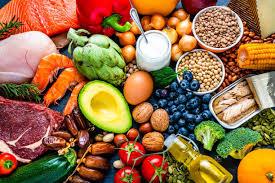READ OUR LATEST BLOG POSTS

Superfoods Demystified: Are They Worth the Hype?
Superfoods Demystified: Are They Worth the Hype?
You’ve probably heard the buzz—kale smoothies, acai bowls, chia pudding—the world of superfoods is trendy, colorful, and sometimes a little overwhelming. But are these nutrient-packed foods really the magical health boosters they claim to be? Let’s break it down.
What Exactly Is a Superfood?
There’s no official scientific definition of a “superfood.” It’s more of a marketing term used to describe foods that are exceptionally high in nutrients like antioxidants, vitamins, minerals, and fiber. Think of them as the overachievers of the produce aisle. But just because a food is labeled a “superfood” doesn’t mean it’s a cure-all or that you need to overhaul your entire pantry.
Popular Superfoods and Their Real Benefits
Let’s look at some heavy hitters and what they actually do:
🫐 Blueberries
The Hype: Anti-aging, brain-boosting, cancer-fighting.
The Reality: Rich in antioxidants (especially anthocyanins), they help fight oxidative stress and inflammation. Great for brain health and may help reduce the risk of heart disease.
🥬 Kale
The Hype: The holy grail of greens.
The Reality: Packed with vitamins A, C, and K, calcium, and fiber. It's a powerful detox supporter and great for bone and immune health. Pro tip: Massage it with olive oil to make it more digestible.
🥑 Avocados
The Hype: The trendy toast-topper.
The Reality: High in healthy fats (monounsaturated), potassium, and fiber. Helps lower bad cholesterol and keep you full longer.
🌱 Chia Seeds
The Hype: Tiny but mighty.
The Reality: Loaded with omega-3 fatty acids, protein, and fiber. They support heart health, digestion, and sustained energy.
🍫 Dark Chocolate (70%+ cacao)
The Hype: A treat that’s good for you? Yes, please.
The Reality: High in flavonoids that may lower blood pressure and improve circulation. Just watch the portion size and sugar content.
🟣 Acai Berries
The Hype: The Instagram-famous smoothie bowl base.
The Reality: High in antioxidants and fiber, with potential anti-inflammatory benefits. Be mindful of added sugars in acai products.
Are Superfoods Really Worth the Hype?
Yes—and no. While superfoods do offer impressive health benefits, they’re not magic bullets. You won’t cancel out a fast-food binge by tossing some spirulina into your smoothie. What matters most is your overall diet and lifestyle.
Superfoods are valuable when they’re part of a balanced, whole-food diet, rich in variety. And the good news? You don’t need to chase exotic berries or expensive powders to eat well. Plenty of everyday foods—like spinach, apples, oats, and sweet potatoes—are nutrient powerhouses, too.
Easy Ways to Add Superfoods to Your Meals
Getting more of these foods into your routine doesn't have to be complicated. Here are some ideas:
Add berries or chia seeds to yogurt or oatmeal
Swap mayo for avocado on sandwiches
Blend spinach or kale into your smoothies
Snack on a square of dark chocolate with some almonds
Top your salad with seeds like hemp, flax, or pumpkin
Bottom Line
Superfoods aren’t a gimmick, but they’re not miracle workers either. They shine brightest when they're part of a larger pattern of healthy choices. So go ahead—sprinkle those chia seeds and load up on leafy greens—but don’t forget: balance, variety, and consistency are still the real MVPs of nutrition.




